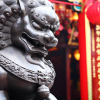Insights
On the Ground in Asia-Monthly Insights: Asian Fixed Income-December 2021
On the back of uncertainties surrounding Omicron and major central banks turning hawkish, we deem it prudent to hold a slightly cautious stance on duration, as well as a slightly defensive stance on Asian currencies.
Harvesting Growth, Harnessing Change - Monthly Insights: Asian Equity-December 2021
Taiwan and South Korea were buoyed by strong exports as sustained global demand for electronics supported hardware tech stocks amid widespread supply chain disruptions. The ASEAN region saw mixed returns. Thailand was the best performer as policymakers approved new stimulus measures to support domestic consumption, while the Philippines had to delay COVID-19 vaccinations on the back of Typhoon Rai.
Navigating Japan Equities: Monthly Insights from Tokyo (January 2022)
We expect Japanese equities to rise significantly in 2022, supported by factors such as the government’s fiscal and coronavirus policies, the reshuffling of the Tokyo Stock Exchange (TSE) and robust exports.
2022 Global Multi Asset Outlook: Gauging long-term growth prospects
We maintain a constructive view of risk assets but are cognizant that the path toward realising gains will be more delicate as we traverse the course of the Fed and other central banks removing their easy policies.
2022 Asian Equity Outlook: Well positioned to navigate tightening
We believe that Asian economies are well positioned to navigate monetary tightening in the US. Government finances are healthier, as are corporate balance sheets. Most Asian economies are digitising faster than their western peers, while consumption is set to receive a meaningful boost from economic reopening.
Global Investment Committee's 2022 Outlook: Positive for risk assets
According to our Global Investment Committee, which concentrates on the intermediate term-view regarding developed markets for pension funds and other long-term investors, 2022 looks to be a challenging, but positive year for risk assets. We believe that the G-3 central banks will become more hawkish, and such pivots can often cause potholes and at the very least headwinds, but we trust that policymakers can traverse their new course successfully overall.
2022 New Zealand Fixed Income Outlook: Boxing on into 2022
For a nation that prides itself on punching above its weight in all we do, 2021 has seen New Zealand bobbing and weaving against the ropes somewhat, as we’ve fought the economic impact of an enduring COVID-19 pandemic. We may have been down in some places, but we’re certainly not out as we approach 2022.
2022 Global Equity Outlook: Disruption sharpens the focus on Future Quality
The initial discovery of the Omicron variant was met with fairly sensational reporting by some of the world’s media and this fed through quickly into investor sentiment. It is probably true, however, that even if Omicron had not surfaced it was probably about time that investors were again reminded of the volatility that resides in markets, despite the mollifying impact of endless liquidity injections by central banks.
2022 Japan Equity Outlook: ESG to bring Japan to the fore
ESG initiatives are expected to become ever more important for companies and investors around the world in 2022. We expect many Japanese companies to come to the fore amid this global shift towards ESG, with enhancements in ESG disclosures shedding light on their value creation opportunities amid the current drive towards decarbonisation.
2022 Singapore Equity Outlook: Focusing on sustainable growth
The Singapore economy is on a road to recovery. Although the economy has already rebounded sharply in 2021, we expect the recovery theme to remain intact and continue supporting the Singapore economy in 2022. We see a broadening of growth within Singapore’s key economic engines in 2022, with a sharper recovery expected in the services sector as the economy reopens.
2022 China Equity Outlook: Focusing on new market leaders
Amid a flurry of headlines, investors may have largely overlooked the significant number of recent positive developments in China, such as initiatives directed towards ambitious renewables targets, the continued opening up of the financial sectors and support for a significant number of industries including AI and big data. We believe these areas could become the new leaders of China’s capital markets, representing investment themes for the next several decades.
2022 Asian Fixed Income and FX Outlook: Regional recovery expected
The economic recovery in Asia ex-China is likely to improve significantly in 2022 as regulations are eased, borders are reopened and vaccination rates increase. We anticipate these developments to boost private sector confidence, providing an important tailwind for Asian ex-China growth in 2022.
Harvesting Growth, Harnessing Change - Monthly Insights: Asian Equity-November 2021
Asian stocks fell in November on concerns that the spread of the new Omicron COVID-19 variant could derail global reopening plans and delay economic recoveries.
2022 Global Fixed Income Outlook
We present our 2022 outlook for core markets, emerging markets and global credit.
2022 Asian Credit Outlook: Growth momentum seen reviving
The macro backdrop and robust corporate credit fundamentals remain supportive of Asia credit spreads. As such, we expect growth momentum of many Asian economies to gather pace heading into 2022. Overall corporate credit fundamentals are expected to remain robust, with earnings growth staying strong—albeit at a slightly slower pace compared to 2021.
Global Investment Committee’s 2022 Outlook: Continue risk-positive, especially for Japan
The global economy should match the consensus for strong growth, thanks to vaccinations, continued fiscal stimulus, acceptable global geopolitical conditions, and continued low interest rates despite increasingly hawkish central banks. Such, via increased corporate profits, should allow equity markets to perform very well ahead, with impressive returns in each region, particularly in Japan.
Japan’s “Show Me the Money” Corporate Governance: 3Q Record High
The just released 3Q CY21 data on aggregate corporate profits in Japan was very positive, as although for the single quarter, the overall corporate recurring pre-tax profit margin declined from the 2Q, as it does routinely for this non-seasonally adjusted data.
Future Quality Insights - December 2021 - A trip to Lisbon
Just a few weeks ago I attended my first in-person conference since 2019. Over 40,000 people descended upon Lisbon for Web Summit, one of the world’s largest technology conferences. The event brings together CEO’s and founders of established firms together with start-ups and policymakers to discuss and pitch ideas over the course of a week.
Why Japan’s CPI remains low when other economies grapple with inflation
As the global economy takes steps to recover from the pandemic, prices have steadily risen around the world. Japan, however, remains an exception among the major economies. The country’s headline CPI did tick up in October, but at a very modest pace, showing that inflation is yet to gain strong traction in a country long stuck in deflation.
China: Regulate in order to innovate
Every few years, concerns emerge over whether China is investable. We are currently witnessing the latest round of this cycle amid China’s drive to regulate. However, investing in China during such moments of doubt has reaped substantial returns in the past. The key is not missing the forest for the trees when China is regulating in order to innovate.
Asian stocks rose in October, with investors remaining focused on rising inflationary pressures and the US Federal Reserve’s tapering plans. The markets’ key concern is China’s economic performance and its impact on the energy and commodity complexes.
On the ground in Asia: Monthly insights from the Asian Fixed Income Team-October 2021
We expect Indonesian bonds to outperform, as demand is supported by positive supply technicals. Meanwhile, we see bonds of low-yielding countries like Singapore, South Korea and Thailand prone to bear flattening, driven mainly by UST movement.
Japan Value Insights: Medical technology key to value and addressing inefficiencies
Japan’s rapidly advancing medical technology is viewed as a way to address the healthcare sector’s inefficiencies while at the same time offering potential value opportunities.
Japan Equity Monthly – October 2021
We explain how the recent lower house election win gives Japan’s new prime minister a free hand to pursue policies aimed to help the economy recover from COVID-19. We also analyse why a weaker yen no longer provides as much of a boost to equities.
Global Equity Quarterly Q3 2021
Our philosophy is centred on the search for “Future Quality” in a company. Future Quality companies are those that we believe will attain and sustain high returns on investment. ESG considerations are integral to Future Quality investing as good companies make for good investment.



























